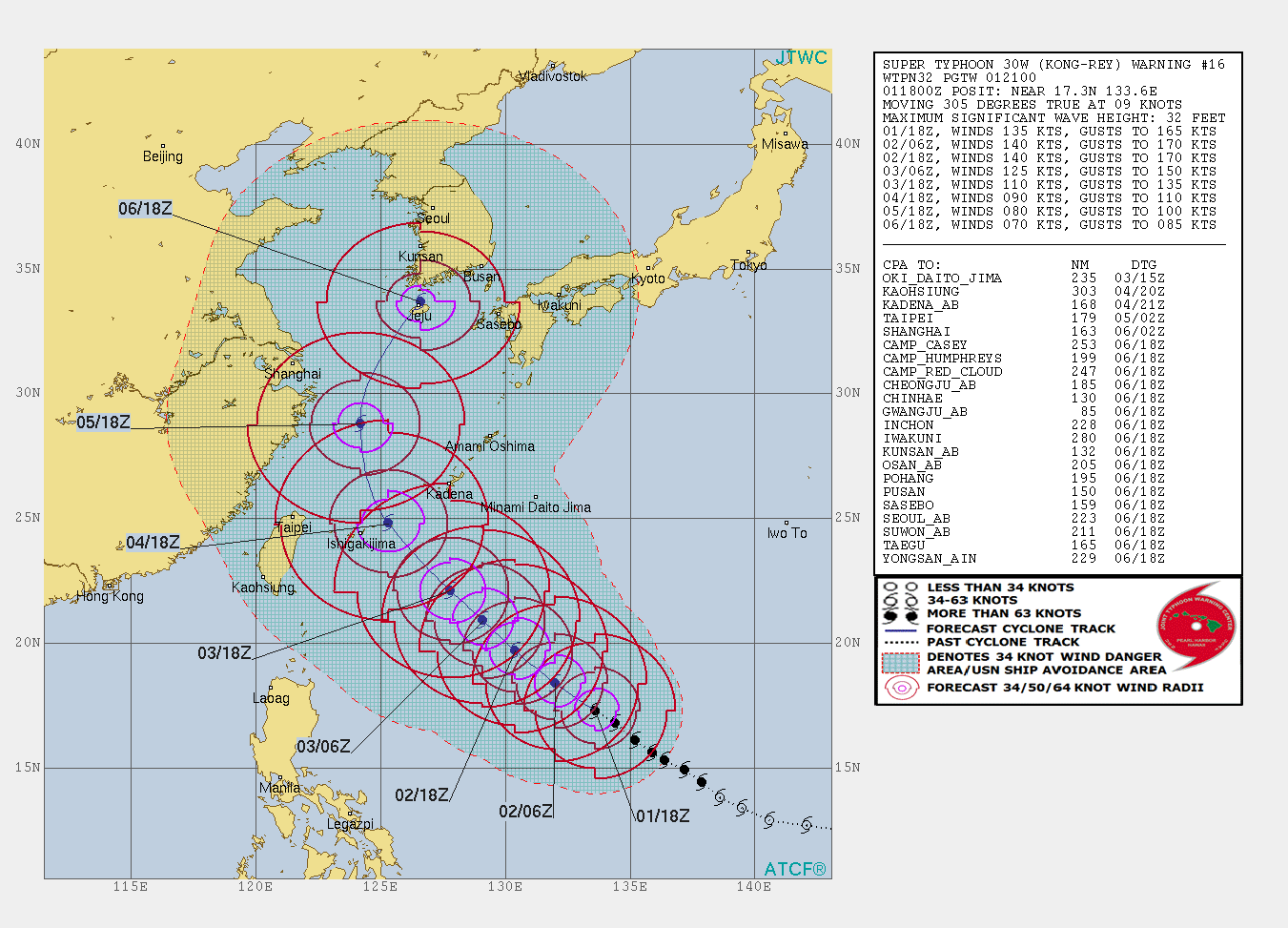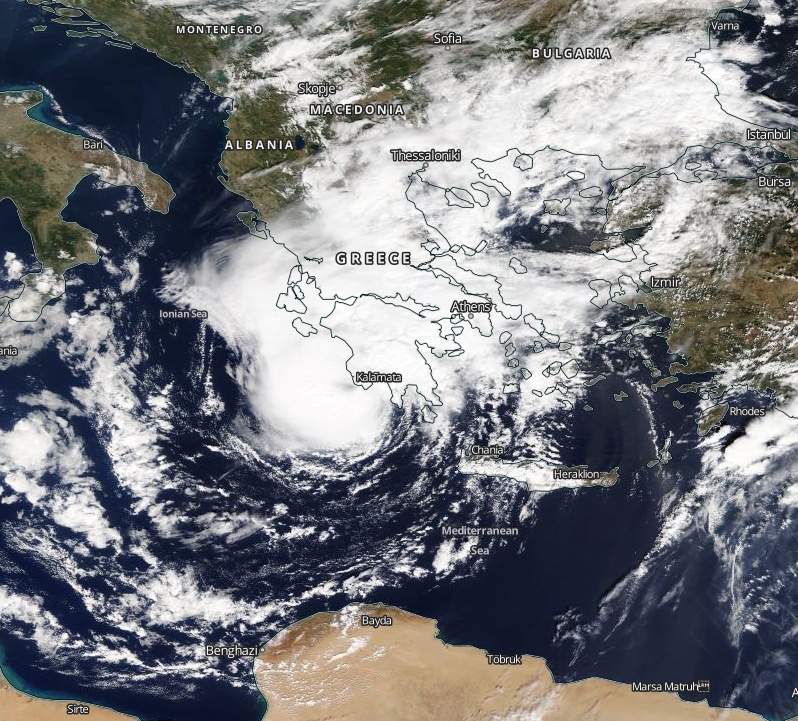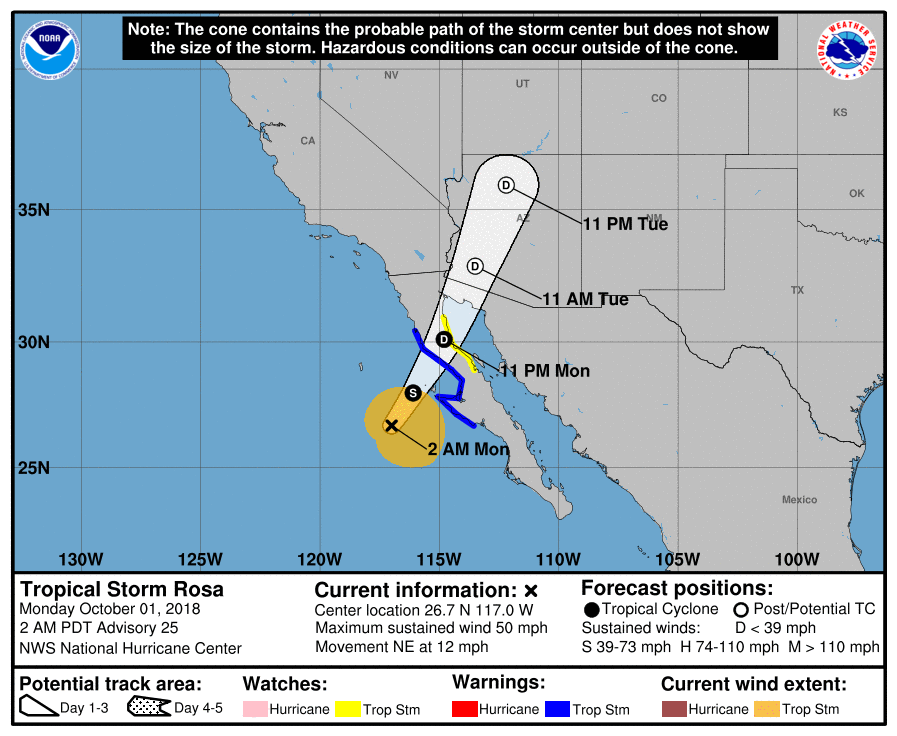The Watchers News Brief: October 1, 2018

BOM: September 2018 Australia's driest September on record
Last month was Australia's driest September on record, BOM reported October 1. Nights were much cooler than average for the time of year over much of Victoria, South Australia and southern NSW. Days, though, were warmer than average, particularly for the tropics.
September was an exceptionally dry month, especially across the southern mainland. Rainfall was the lowest on record for September both nationally, and for southern Australia (i.e. those areas south of 26°S). It was the second driest September on record for Victoria, third driest for Western Australia, and fourth driest for South Australia.
Rainfall totals were in the lowest 10% of historical rainfall totals for the month in large areas including greater southwestern Western Australia (southwest of a line between about Geraldton and Esperance), South Australia from Ceduna east across the Eyre Peninsula and agricultural districts, much of the western half of New South Wales, and nearly all of Victoria except parts of South and West Gippsland. September rainfall was below average across most of the remainder of southern Australia, Queensland and the Northern Territory, but near average for large parts of northeastern New South Wales and large areas of southeastern to Central Coast Queensland.
Total rainfall for the month was the lowest on record for September at many sites in Victoria and Western Australia, and a handful of locations in New South Wales and Tasmania. The year to date has also been exceptionally dry over the mainland southeast, with significant rainfall deficiencies continuing to affect large areas of eastern Australia at timescales out to around two years duration.
Above average rainfall was only recorded in small pockets, including northeastern New South Wales, parts of the coastal Kimberley, and about Joseph Bonaparte Gulf with very much above average rainfall in part of the southwestern Top End due to unseasonable rainfall in the last week of the month.
Typhoon "Kong-rey" becomes the 6th super typhoon of 2018 Pacific season
Typhoon "Kong-rey" rapidly strengthened into 6th super typhoon of the 2018 Pacific typhoon season.
At 18:00 UTC on October 1, Kong-rey, known as Queenie in the Philippines, was located about 830 km (516 miles) north-northwest of Yap, Federated States of Micronesia.
Its 10-minute sustained winds were 195 km/h (120 mph); 1-minute sustained winds were 250 km/h (155 mph), with gusts up to 280 km/h (175 mph). The minimum barometric pressure was 915 hPa and the system was moving northwestward at 17 km/h (10 mph).

Thousands feared dead after quake-triggered mudflow flattens Palu villages, Sulawesi, Indonesia
Petobo subdistrict in South Palu district, Palu, located 10 km (6.2 miles) from the sea, has been struck by a massive mudflow after M7.5 earthquake on September 28, leaving an estimated 2 000 people dead.
The same unexpected disaster hit another subdistrict in West Palu district, Palu. The subdistrict was sunken to the ground and thousands were estimated to be dead.
On October 1, the official death toll is 844.
This is very scary. Land become weakness, become a mud and moving all around to the lower place. Moving very fast as a landslide with hundreds meters from its origin during 7.4 magnitude earthquake in Sigi near Palu. #PrayForPalu #PrayForDonggala #PrayForSulteng #PrayForSulawesi pic.twitter.com/fyVt8VCqcu
— Anggunesia (@Anggunesia) September 29, 2018
Typhoon "Trami" hits Japan, leaving 4 dead and missing, 170 injured and 1.3 million homes without power
Typhoon "Trami" made landfall near Tanabe City in Wakayama Prefecture, Honshu, Japan around 11:00 UTC (20:00 JST) on Sunday, September 30, 2018, as a Category 3 hurricane equivalent on the Saffir-Simpson Hurricane Wind Scale.
At least 2 people lost their lives, two are still missing, more than 170 were injured and 4 million urged to evacuate. Trami is the eight named storm to hit Japan this year… and there is another one coming.
Medicane "Cindy" (Zorbas) hits Greece and Turkey, leaving at least 3 people missing
Medicane "Cindy," also known as Zorbas, as named by Freie Universität Berlin, developed in the Mediterranean Sea on September 27, 2018, and moved past the southwestern tip of Peloponnese, Greece on September 29 with winds of 90 km/h (55 mph) and gusts to 105 km/h (65 mph). The storm left three people missing in Greece before it reached Turkey, causing severe flash flooding.
The hardest hit was Messinia in the southeast of the Peloponnese peninsula. The coastal capital of Kalamata and seaside villages like Methoni and Finikounda were inundated by waves. Other hard-hit areas include the northern part of the island of Evia, where three people went missing on September 30.
Strong winds caused tree and power line damage, forcing school closures in parts of the country, including capital Athens where heavy rain flooded streets and homes.

Image credit: NASA Terra/MODIS
Tropical Storm "Rosa" approaching Baja California, flooding, debris flows and landslides possible over parts of Mexico and western United States
The center of Tropical Storm "Rosa" was located about 225 km (140 miles) WSW of Punta Eugenia, and 525 km (325 miles) SSW of San Felipe, Mexico at 09:00 UTC on October 1, 2018.
Rosa is expected to produce heavy rain across Baja California and northwestern Sonora, Central and Southern Arizona and the rest of the Desert Southwest, Central Rockies and Great Basin. Life-threatening flash flooding is expected as well as dangerous debris flows and landslides in mountainous regions.


Netherlands records the coldest September night since 1971
The temperature at weather station Twenthe (near Enschede) dropped to -1.5 °C (29.3 °F) on September 29, marking the coldest September night in 47 years.
In 1971, weather stations Soesterberg and Winterswijk recorded minimum temperatures of -2.2 and -2.4 °C (28 and 27.7 °F) on September 16.
Other places in the east and south also saw frost, the first of the season.
Saskatoon breaks 100-year-old temperature record, Canada
September 2018 was way colder than normal in Saskatoon with temperatures trending a 4 °C (7.2 °F) lower than normal overall.
Most of that was on the daytime high side of the scale with the mercury averaging out 5.4 °C (9.7 °F) cooler than seasonal with overnight lows 2.5 °C (4.5 °F) below normal.
The final day of the month was the coldest ever recorded in Saskatoon with the mercury plunging back to -8.7 °C (16.3 °F), breaking a 100-year-old record of -8.3 °C (17 °F).
Hottest September temperature ever for Tampa, Florida
On September 29 and 30, the temperature in Tampa topped out at 36.1 °C (97 °F), the hottest temperature ever recorded during the month of September.
September 2018 was also the hottest September on record in Tampa with an average temperature of 29.9 °C (85.9 °F). The figure includes the high temperature and low temperature of each day averaged together. This was the second time in three years for the city to set this record.
Tropical Storm "Kirk" causes power outages, heavy flooding in the Caribbean
Tropical Storm "Kirk" caused power outages and heavy flooding across the eastern Caribbean and forced flight cancellations on September 27 and 28, AP reports.
Authorities in Barbados said they helped rescue several people from a flooded home, while school was cancelled in the nearby islands of St. Lucia, Dominica, Guadeloupe and Martinique.
Meteorologists said that up to 250 mm (10 inches) of rain fell in some parts of Martinique, Dominica and Barbados as they warned of flash floods and mudslides.
Major hailstorm in Alassio, Italy on October 1
Intense first snowfall of the season at Riserva Bianca Limone Piemonte, Italy on October 1
Japan hit by unseasonal high temperatures after Typhoon "Trami"
Tokyo woke up to unseasonal heat and bright cloudless skies on October 1, hours after the Typhoon "Trami" caused widespread power outages and left at least 4 people dead and missing.
In the wake of the typhoon, new October temperature records were set at 51 weather points, mainly in eastern Japan.
The mercury hit a new peak of 34.3 °C (93.7 °F) in Sano city in Tochigi and 33.8 °C (92.8 °F) in Kumagaya city in Saitama, both in the Greater Tokyo region. Central Tokyo recorded 32.3 °C (90.1 °F) heat, the second-highest reading in history for October.
Drone video captures the extent of damage from deadly Indonesia earthquake, tsunami
Eruption at Barren Island, India
The eruption that began at Barren Island, India a few days ago is producing a lava flow. The last eruption of this volcano started in January 2017 and ended in May of the same year.
#volcan #volcano #BarrenIsland #Inde #India L'éruption qui a débuté il y a quelques jours produit une coulée de lave/The eruption that began a few days ago produces a lava flow; via @CopernicusEU @esa pic.twitter.com/8WJdeh1Axo
— CultureVolcan (@CultureVolcan) September 30, 2018
Third most energetic meteor of the year recorded over Reunion and Mauritius
A very bright fireball was observed over the islands of Reunion and Mauritius islands at 14:10 UTC on September 25, 2018. Its calculated total impact energy is 1.9 kt, making it the third most energetic meteor since the start of the year and 48th on record.
The International Meteor Organization (IMO) received just two reports of this event, but it was recorded and video is available on YouTube.
"It lasted more than 5 seconds, illuminating the clouds and the sky," IMO reports. "The meteor occurred south of the two islands, over the Indian Ocean, leaving no chances of finding associated meteorites."


Featured image credit: Meteo Hella, TW

Commenting rules and guidelines
We value the thoughts and opinions of our readers and welcome healthy discussions on our website. In order to maintain a respectful and positive community, we ask that all commenters follow these rules:
We reserve the right to remove any comments that violate these rules. By commenting on our website, you agree to abide by these guidelines. Thank you for helping to create a positive and welcoming environment for all.